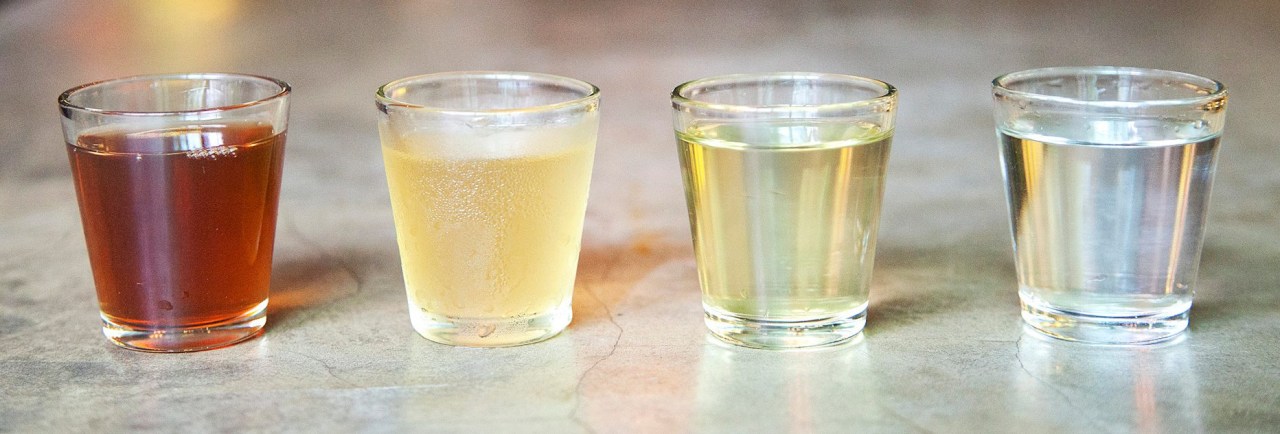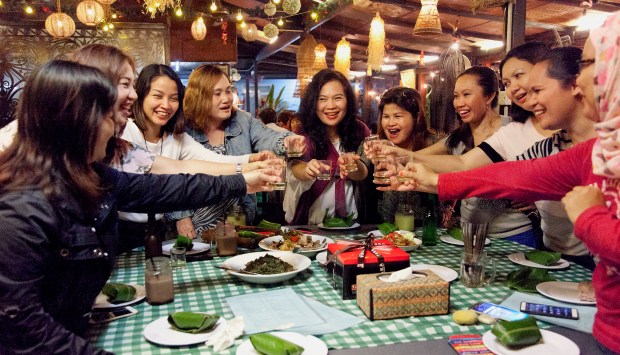When you think of countries with an exciting drinking culture worth exploring, you probably don’t think of Malaysia. Although it’s not a dry country, national law prohibits the sale or consumption of alcohol by local Muslims (this is not strictly enforced in the cities, however). Still, between personal inclination, religious injunctions, and these laws, about 82 percent of the country’s population abstains from drink, according to the World Health Organization. Most of what’s on offer in Malaysian bars is cheap, foreign (although sometimes locally canned) beer: Anchor, Carlsberg, Skol, and Tiger are quite popular.
Malaysia’s Bornean states are an exception. According to Ernesto Kalum, an amateur anthropologist, Dayak (indigenous) peoples in Sabah and Sarawak have long histories of brewing up a number of wickedly unpredictable concoctions from ingredients found in their gardens and jungles. There may have been a drinking problem in some Dayak communities as social structures changed drastically in the 20th century, but health officials say this is no longer the case. Still, this cultural shame largely destroyed the brewing custom in some parts of Malaysian Borneo, while modernization and a preference for cheap, reliable, and easily obtained international brands reduced interest in local brews, especially amongst young and urban populations.
Yet even though Malaysian Borneo’s indigenous drinking tradition is on the decline in many areas, in most cities it’s still easy to find local bars offering up the most famous of the island’s drinks. In Kuching, your best bet for regularly finding a small but high-quality local selection may be Ruai, a bar on Ban Hock Street run by a local Iban man, Valentino Ngabong. Here, we decode what Ngabong had to offer when we visited his joint, and just as importantly, what he didn’t.
Tuak
Undoubtedly the most common indigenous drink in Malaysian Borneo, this brew’s known by a few different names. But anywhere you go in Kuching, or wider Sarawak, call it tuak (too-ack) and you’ll find what you’re looking for. Tuak is a gentle rice wine. It’s traditionally made with rice, rice milk, water—though sugar is often used today as well—and a yeast-enzyme starter mix known as ragi, which is also used in tapai, a fermented rice cake dessert.

Tuak can be difficult to describe, mainly because it varies so widely. Every region has its own variations—adding various spices to their ragi starter (like cinnamon and up to nine types of local ginger)—with unique flavors. Some people like to add fruit flavors to their tuak, mixing in tinctures during the brewing. And different mixing ratios and techniques mean that batches of tuak can vary widely in alcohol content.
A lot of tuak comes in the same type of green glass or clear plastic bottle, making it difficult to know where any bottle of tuak came from (and sometimes the sellers don’t even know, although Ngabong does—and he can tell you how strong his latest batch is, too). If you go from bar to bar you may be able to find aged tuak in pristine glass bottles; I managed to find some at a café operated by a Kayan family in Bintulu and the taste was radically different than any other I’d tried in Sarawak—fruitier, with a little more bite and astringency.
There are two important traditions associated with tuak: First, it is only made by women in Iban communities. (Iban is the largest Dayak population in Sarawak.) Second, when someone offers you tuak in a longhouse, especially during the Gawai (harvest) festival, you have to drink it. Fortunately for those worried about getting too blotto (which is assured at Gawai), this taboo doesn’t carry into cities.
Langkau
Sometimes called Sarawakian moonshine, langkau is essentially distilled tuak—an especially potent rice spirit. Ngabong insists that this distillation only brings out the finer differences between rice brews. But for many people, this stuff will be fire water.
The Iban say that the name langkau comes from a term for huts, referencing where it’s traditionally brewed. Others believe it’s a technique brought over by one of Borneo’s many immigrant communities. Wherever it comes from, langkau production is quasi-legal at best and its quality can be iffy. According to Ngabong, the best and most reliable home brew liquor comes from the longhouses, which is where he sources his supply. Between negative views toward it and its legally gray status, langkau is much harder to find in your average bar than tuak but is a significant part of the local liquor heritage.
Occasionally you will find langkau with bits floating in it—crocodile parts or scorpions. These don’t do anything for the flavor. Instead, they’re claimed to be aphrodisiacs, making them popular amongst men. Don’t get your hopes up, though—it’s just a good way for urban barkeeps to charge a bit more for strong hooch.

Local “spirits”
Most bars throughout Sarawak stock Western spirits—Ngabong says tequila is popular amongst his clientele these days. However Sarawak also produces a number of local spirits; you can find them in most major Sarawakian cities, usually at distilleries run by Chinese families. Urbanites tend not to drink them, and every bartender I’ve spoken to refuses to stock them because they supposedly taste terrible. Ngabong describes them as exceptionally cheap basic liqueurs, made from rice or grain.
Beer
Every bar in Kuching leans heavily upon Anchor and Tiger beer. Brewed and bottled nearby, and thus easy to import (legally or illegally), it’s a cheap and efficient way to get drunk. These brews are common across every drinking demographic in Kuching and you will see at least a dozen empty cans on any group’s table midway through a night out. Unless you’re really committed to drinking only tuak and langkau, you will end up drinking a fair amount of regional beer.

Other liquors
Although tuak almost always refers to rice wine, in some villages you can find tuak made of other ingredients. Essentially, locals just brew whatever’s in season when it’s ripe and ready: like apples, pineapples, or sugar cane. Borneans also make a variety of small-batch liquors that rarely make it past their villages—much less to Kuching bars. One of the easiest to find just outside of Kuching may be ejol, a fizzy, beer-like beverage made by stripping the bark off of a type of palm, beating it down and squeezing out the liquids, then fermenting it. However, if you travel far and wide enough in Borneo, you will likely find booze made from almost anything that can be fermented. That’s just one more reason to get out of cities like Kuching—as fun as the local nightlife may be—and explore the countryside.
